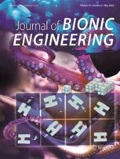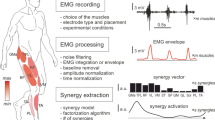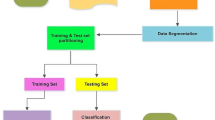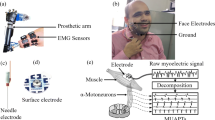Abstract
Two new feature extraction methods, window sample entropy and window kurtosis, were proposed, which mainly aims to complete the surface Electromyography (sEMG)-muscle force pattern recognition for intelligent bionic limb. The inspiration is drawn from physiological process of muscle force generation. Five hand movement tasks were implemented for sEMG-muscle force data record. With two classical features: Integrated Electromyography (IEMG) and Root Mean Square (RMS), two new features were fed into the wavelet neural network to predict the muscle force. To solve the issues that amputates’ residual limb couldn’t provide full train data for pattern recognition, it is proposed that force was predicted by neural network which is trained by contralateral data in this paper. The feasibility of the proposed features extraction methods was demonstrated by both ipsilateral and contralateral experimental results. The ipsilateral experimental results give very promising pattern classification accuracy with normalized mean square 0.58 ± 0.05. In addition, unilateral transradial amputees will benefit from the proposed method in the contralateral experiment, which probably helps them to train the intelligent bionic limb by their own sEMG.
Similar content being viewed by others
References
Otto Bock System Electric Hand. Patent 647H326, Otto Bock, Germany, 1999.
Dhillon G S, Horch K W. Direct neural sensory feedback and control of a prosthetic arm. IEEE Transactions on Neural Systems and Rehabilitation Engineering, 2005, 13, 468–472.
Biddiss E A, Chau T T. Upper limb prosthesis use and abandonment: A survey of the last 25 years. Prosthetics and Orthotics International, 2007, 31, 236–257.
Yang D, Zhao J, Gu Y, Wang X, Li N, Jiang L, Liu H, Huang H, Zhao D. An anthropomorphic robot hand developed based on underactuated mechanism and controlled by EMG signals. Journal of Bionic Engineering, 2009, 6, 255–263.
Kent B A, Lavery J, Engeberg E D. Anthropomorphic control of a dexterous artificial hand via task dependent temporally synchronized synergies. Journal of Bionic Engineering, 2014, 11, 236–248.
Scheme E, Englehart K. Electromyogram pattern recognition for control of powered upper-limb prostheses: State of the art and challenges for clinical use. Journal of Rehabilitation Research & Development, 2011, 48, 643–660.
Parker P, Englehart K, Hudgins B. Myoelectric signal processing for control of powered limb prostheses. Congress of the International-Society-of-Electrophysiology-and-Kinesiology, Torino, Italy, 2006, 541–548.
Li G, Schultz A E, Kuiken T A. Quantifying pattern recognition-based myoelectric control of multifunctional transradial prostheses. Neural Systems and Rehabilitation Engineering, 2010, 18, 185–192.
Li Y, Tian Y T, Chen W Z. Modeling and classifying of sEMG based on FFT blind identification. Acta Automatica Sinica, 2012, 38, 128–134. (in Chinese)
Khezri M, Jahed M. Real-time intelligent pattern recognition algorithm for surface EMG signals. Biomedical Engineering online, 2007, 6, 45.
Khezri M, Jahed M. A neuron-fuzzy inference system for sEMG-based identification of hand motion commands. IEEE Transactions on Industrial Electronics, 2011, 58, 1952–1960.
Li N, Yang D, Jiang L, Liu H, Cai H G. Combined use of FSR sensor array and SVM classifier for finger motion recognition based on pressure distribution map. Journal of Bionic Engineering, 2012, 9, 39–47.
Lloyd D G, Besier T F. An EMG-driven musculoskeletal model to estimate muscle forces and knee joint moments in vivo. Journal of Biomechanics, 2003, 36, 765–776.
Wei G F, Tian F, Tang G, Wang C T. A wavelet-based method to predict muscle forces from surface electromyography signals in weightlifting. Journal of Bionic Engineering, 2012, 9, 48–58.
Menegaldo L L, Oliveira L F. The influence of modeling hypothesis and experimental methodologies in the accuracy of muscle force estimation using EMG-driven models. Multibody System Dynamics, 2012, 28, 21–36.
Kamavuakoa E N, Farina D, Yoshida K, Jensen W. Relationship between grasping force and features of single-channel intramuscular EMG signals. Journal of Neuroscience Methods, 2009, 185, 143–150.
Gurram R, Rakheja S, Gouw G J. A study of hand grip pressure distribution and EMG of finger flexor muscles under dynamic loads. Ergonomics, 1995, 38, 684–699.
Zajac F E. Muscle and tendon: properties, models, scaling, and application to biomechanics and motor control. Critical Reviews in Biomedical Engineering, 1988, 17, 359–411.
Scheme E J, Englehart K B, Hudgins B S. Selective classification for improved robustness of myoelectric control under nonideal conditions. IEEE Transactions on Biomedical Engineering, 2011, 58, 1698–1705.
Abdelmaseeh M, Smith B, Stashuk D. Feature selection for motor unit potential train characterization. Muscle & Nerve, 2014, 49, 680–690.
Hariharan M, Fook C Y, Sindhu R, Adom A H, Yaacob S. Objective evaluation of speech dysfluencies using wavelet packet transform with sample entropy. Digital Signal Processing, 2013, 23, 952–959.
De Luca C J. The use of surface electromyography in biomechanics. Journal of Applied Biomechanics, 1997, 13, 135–163.
Jin F, Sattar F, Goh D Y T. New approaches for spectro-temporal feature extraction with applications to respiratory sound classification. Neurocomputing, 2014, 123, 362–371.
Arjunan S P, Kumar D K. Decoding subtle forearm flexions using fractal features of surface electromyogram from single and multiple sensors. Journal of NeuroEngineering and Rehabilitation, 2010, 7, 53.
Author information
Authors and Affiliations
Corresponding author
Rights and permissions
About this article
Cite this article
Zhuojun, X., Yantao, T. & Yang, L. sEMG Pattern Recognition of Muscle Force of Upper Arm for Intelligent Bionic Limb Control. J Bionic Eng 12, 316–323 (2015). https://doi.org/10.1016/S1672-6529(14)60124-4
Published:
Issue Date:
DOI: https://doi.org/10.1016/S1672-6529(14)60124-4




